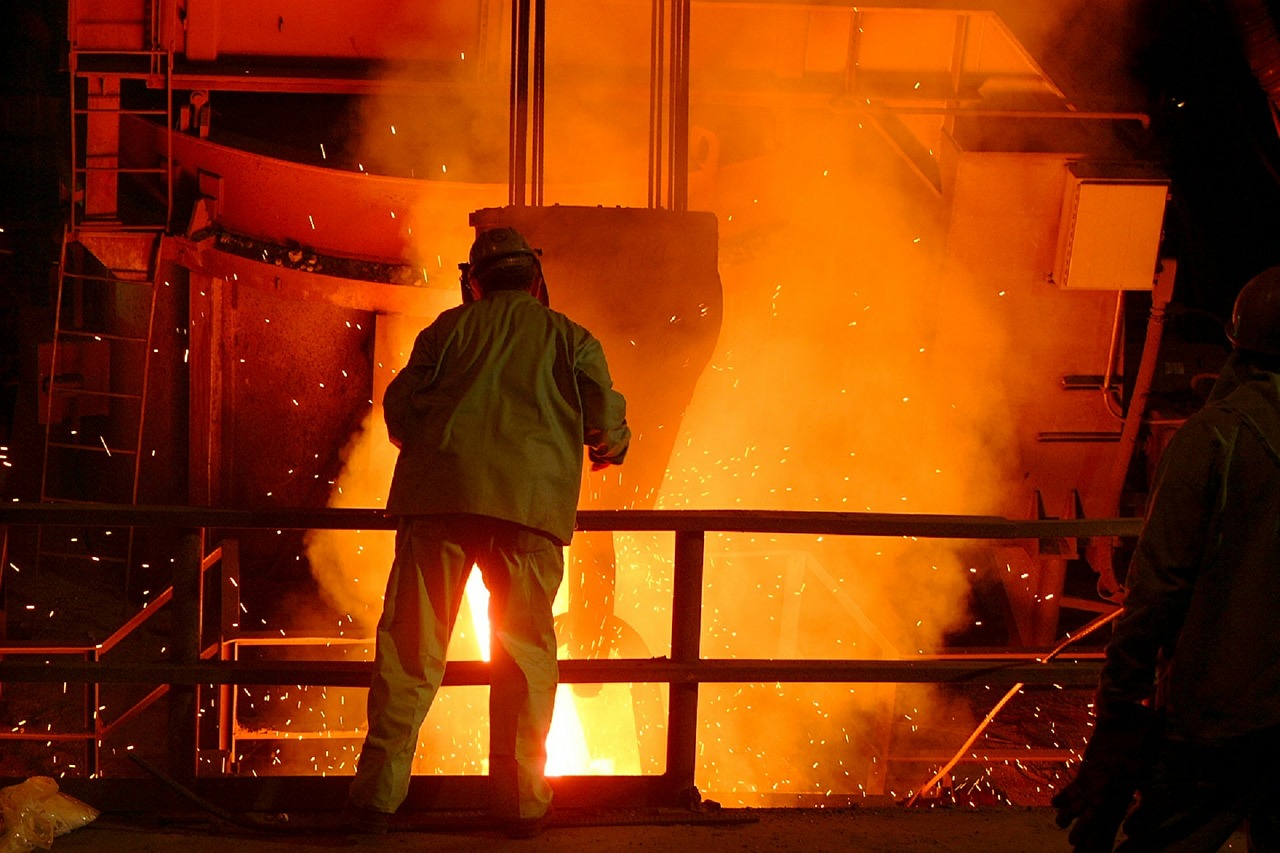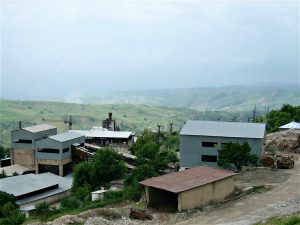A top priority for China’s government in 2016 has been to reduce excess industrial capacity, a problem that is particularly evident in many energy intensive and polluting industries.
Six of those industries – including steelmaking, nonferrous metals, building materials, petrochemicals, chemicals, and electric power generation – accounted for 77% of total energy consumption of the entire Chinese industrial sector in 2010.
But today the oversupply of products, such as steel and coal, has been blamed for falling profits in Chinese industry, and led to accusations by China’s trading partners that the country is causing “distortions in global markets”.
That said, the plan to cut excess capacity appears to be working. Government data indicates that the steel, iron and coal mining industries have reportedly achieved their 2016 targets ahead of schedule. These were to cut 45 million tonnes of crude steel production and 250 million tonnes of coal, respectively. For comparison, China produced about 800 million tonnes of crude steel and 3.7 billion tonnes of coal in 2015.
But for the cement industry progress has been slower. In fact, cement production is up compared to last year, which suggests that the industry is failing to address overcapacity compared with the gains elsewhere.
But looking beyond the recent data towards the medium and long term prospects for reducing oversupply suggests that China’s steel and coal industries may face greater challenges ahead, while the signs for cement are more promising. This is because of cement’s unique product and market characteristics.
Flawed methods
So why will it be hard to tackle excess capacity in China’s steel and coal industries?
Firstly, reductions made so far in these industries may not be as impressive as they appear. The Chinese business paper, Caixin, recently reported that many steelmaking factories that were targeted as part of the government’s capacity reduction plan in 2016 had, in fact, been “idle” for years. This will make reductions in 2017 and beyond much harder as the low-hanging fruit has been picked. Furthermore, closure of coal and steel plants has been supported by significant funding from central government, partly through a 100 billion yuan (US$14.5 billion) special fund, inaccessible to other industries such as cement.
But perhaps more importantly, the two approaches to cutting excess capacity in the coal and steel industries have some important limitations.
The first approach consists of administrative measures that critics say are arbitrary and unsustainable. For example, the Chinese government issued a policy early this year requiring coal mines to operate less than 275 days per year, effectively reduced coal mining capacity by 16%. Unfortunately, the government had to relax the limit in November due to a shortage of coal.
In the steel industry, small steelworks that produce poor quality products have escaped scrutiny because they are not covered by an official list of registered steelworks.
The second approach to reducing capacity relies on intensifying market competition. In theory, firms that operate least efficiently and have the highest costs would be out-competed and forced to close. But in practice this requires the enforcement of laws and regulations with respect to environmental protection, product quality, safety and so on. Although China is improving in these respects, prices of many products do not yet fully reflect the true costs of production. In some cases, production comes at a cost to the public, and also to those companies that are more socially and environmentally responsible, thereby denying a level playing field.
In addition, the nature of competition between companies in the same industry, in which each firm acts in its own interests, can lead to adverse market outcomes. In the face of uncertain market prospects, firms may be unwilling to exit from the market first and give others the advantage. The result is deadlock among competing firms.
Economic models suggest that it may well be large firms that cut production capacity first in a declining industry because they bear higher costs in maintaining market share than small firms. Given that large firms tend to employ more advanced technology, this scenario may lead to a reduction in technological competence at the industry level. Managerial and behavioural factors are also important. Managers may be reluctant to reduce capacity or close entirely because of career concerns, even when the company is uncompetitive and divestment may be in the best interest of investors.
A role for cartels
One solution to these problems would be to encourage cooperation among firms to jointly reduce capacity. While cartels are often viewed as undermining market competition, they can prove useful under some circumstances.
China’s Anti-Monopoly Law allows for an agreement among business operators under certain circumstances, including for the purpose of “mitigating serious decrease in sales volume or obviously excessive production during economic recessions”; as well as for “achieving public interests such as conserving energy, protecting the environment and relieving the victims of a disaster”. The coal, steel and cement industries clearly meet these conditions.
But getting firms to voluntarily cooperate to cut capacity is another matter. In the coal and steel industries this would pose a significant challenge because there are a large number of independent businesses that are scattered diffusely among a large number of regions. There is an added risk that some firms would act as “free-riders” and look to take advantage of voluntary capacity closures by others firms.
The cement industry is different
Yet there is hope that such problems could be overcome in the cement industry because its market is highly regional. Cement is mostly sourced and sold locally because a large proportion of the price results from transportation and distribution costs. In a given regional market the number of competitors is limited, making an agreement among parties to reduce capacity more likely.
There are already encouraging signs that the cement industry can facilitate capacity closures. Cement manufacturers in Shandong province, for example, have been working together to coordinate production. With support from the China Cement Association, major cement producers have also been working towards establishing a joint investment enterprise that will help to rationalise cement production capacity in the province. Under the plan, participating firms make closures in a voluntary and cooperative manner.
The China Cement Association has also made policy recommendations to the Ministry of Industry and Information Technology (MIIT) to establish a fund to compensate firms willing to close production lines and to help businesses across the country transition into other activities. Cement companies would contribute to the fund according to their level of production.
Lessons from history
The Chinese cement industry could also learn from the experience of the UK steel castings industry in the 1980s, which successfully reduced capacity.
Like other industries in the 1970s and ‘80s, it experienced severe excess capacity and undertook a restructuring process. Firms established a fund based on contributions from the companies and government to compensate firms that voluntarily reduced capacity. Every player in the industry could choose either to contribute to the fund and stay, or take compensation and leave.
Unlike the plans currently under consideration in the Chinese cement industry, the initiative was designed and implemented by an investment bank, Lazard. By using a third party the arrangement avoided conflicts of interest, and the involvement of a financial institute helped to facilitate the process and ease access to financial support.
As documented by professor Charles Baden-Fuller of Cass Business School the implementation of the programme was not without difficulties because many firms were unwilling to close capacity owing to economic and managerial concerns. The programme was successful though. About 36,700 tonnes of casting capacity was closed, accounting for 14% of the industry’s total capacity in 1975.
The lessons from industrial restructuring in the West and from current efforts to reduce overcapacity in China suggest that administrative measures and market competition are not the only ways to address the problem.
For energy intensive and heavily polluting industries such as cement, cooperation among firms and voluntary agreements for joint capacity closures should be encouraged. The government and industry associations should work closely with firms and provide support to achieve these goals.








